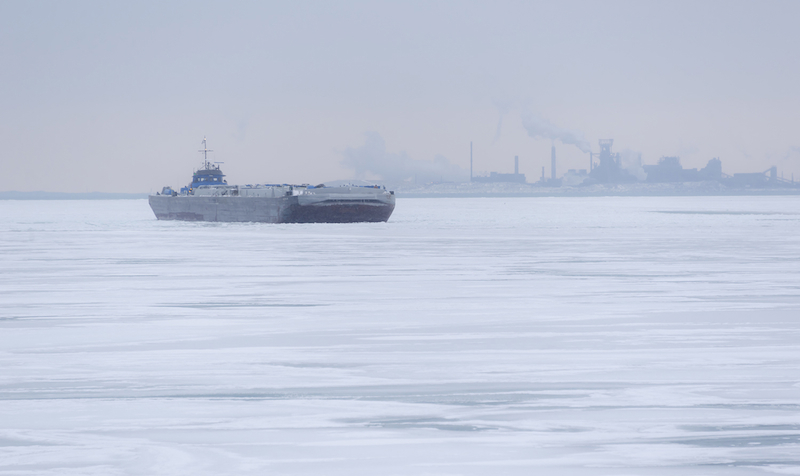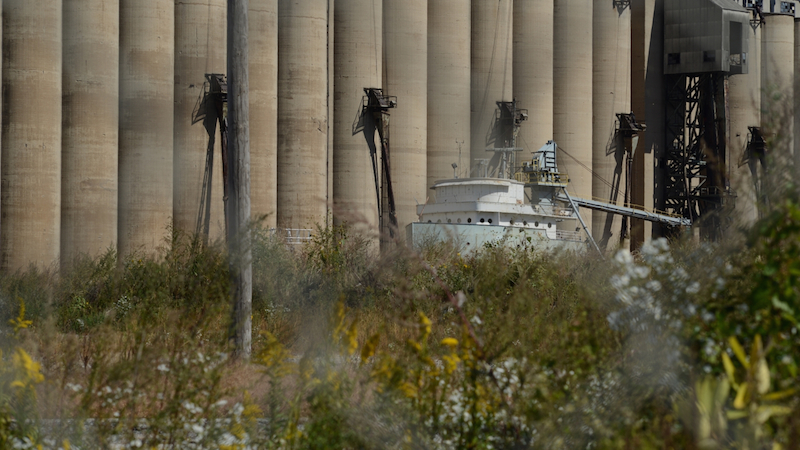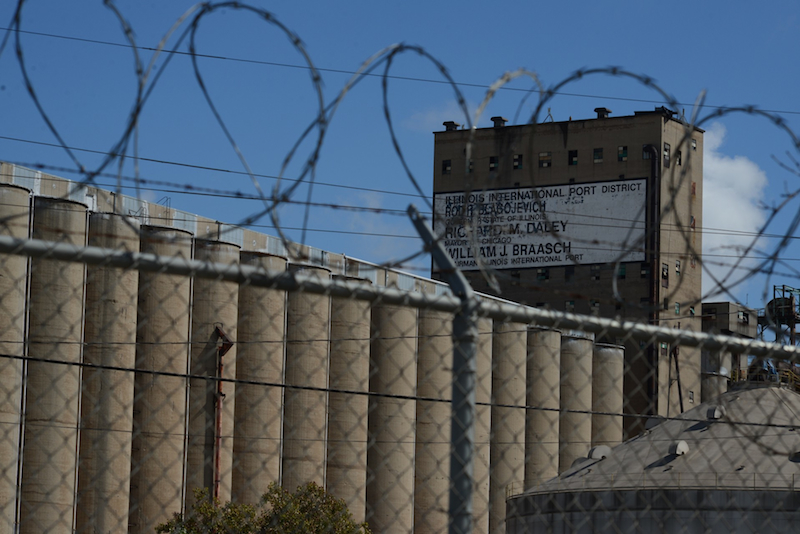
Coke barge on Lake Michigan towards Iroquois Landing, Illinois International Port District. Courtesy Rozalinda Borcila and Southwest Corridor Northwest Passage.
Brian Holmes and Rozalinda Borcila’s Foreign Trade Zone: A People’s Consultancy is on view from April 25 through May 31, 2014 at threewalls, Chicago. This exhibition will provide a site for presented research and public programming on the implications of logistical geographies and global supply chains, in particular Chicago’s trade landscapes, ports, warehouse districts, and transit corridors. Foreign Trade Zone: A People’s Consultancy is an extension of the ongoing collaborative project Southwest Corridor Northwest Passage.
A din surrounds the concept of value. Most often, it can be reduced to two equivocal questions. One that asks what value is, the other how value is created. The former pertains to identifying value in its economic and cultural manifestations. First as an accumulation of human labor in an object, then along a highly negotiable trajectory of ascription. The latter question of how applies to this trajectory, to the mechanisms through which value is propagated and interpreted. As ideas, the what and the how of value-formation are inseparable. They are entwined in a feedback loop predicated on frictionless exchange and expedited mobility—everything, and everyone, in motion. Finding value is an exercise in maneuvering spaces inscribed with ideology. Yet the devices that determine what value is and how value is formed tend to skirt the question of where it all takes place.1 Where value is reconciled and mobilized is as pressing as how, though these spaces remain to a large extent unseen.

Grain elevators, Illinois International Port District, Lake Calumet Harbor. Courtesy Rozalinda Borcila and Southwest Corridor Northwest Passage.
The Foreign Trade Zone is a space emblematically unseen. An enclave where commerce, management, finance, and communication intersect, the zone embodies an itinerant condition that characterizes power and capital today.2 This is an innocuous space, delineated by barbed wire and electronic fences, enveloped in impenetrable legal semantics, and exempt from governance, tariffs, and trade regulations. The zone is a paradigmatic urban form, an integral cog in the supply chains of global trade, a defining catalyst of warehouse compounds and transit corridors, and an exemplum of blurred public and private interest. Above all, the zone is unapologetically enigmatic. Yet for now, characterizing precisely whatthe Foreign Trade Zone is and how it operates is far less consequential than understanding it as an insulated space—at once physical and juridical—where value is prescribed and animated; a space with the single prevailing defining feature of being at once integrated within and entirely autonomous from the urban setting it occupies: a space set apart, hiding in plain sight. Difficulty lies in understanding a space that defies access. So, to paraphrase David Harvey, let’s try to put this in a more immediate context.3

Coke, ore, metal held on the banks of the Calumet River. Courtesy Rozalinda Borcila and Southwest Corridor Northwest Passage.
Consider for a moment that I am reading this essay aloud while standing within the perimeter of a Foreign Trade Zone. The reach of my words is bounded by the absolute space of the particular infrastructure that makes up the zone. To hear me people have to be there within that absolute space. People who cannot get in are excluded and will not hear me. Yet, I am also in a relative space with respect to my audience. I am here and they are there. I try to communicate across the space through a medium—the atmosphere—that refracts my words differentially. I talk softly, and the clarity of my words fades across the space. Those far from me may not be able to hear me at all. A discontinuity arises between those who can understand me and those who cannot. There is a relational component, too. Individuals in the audience bring to the absolute space all sorts of ideas and experiences culled from the space of their life trajectories. I find myself thinking while speaking that everything we are doing here is trivial. There is a palpable tension. Then, I extricate myself from all these relationalities, retire back into the absolute and relative spaces I occupy, and try to address the topic of the Foreign Trade Zone as a complex location where value is created in a dry and technical manner.4

Grain elevators, Illinois International Port District, Lake Calumet Harbor. Courtesy Rozalinda Borcila and Southwest Corridor Northwest Passage.
After all, finding value in the contemporary art world is an exercise in maneuvering spaces inscribed with ideology—the institution, the critique, the party, and so on. Yet these spaces remain to a large extent unseen and consequently inaccessible—absolutely inaccessible (the party), relatively inaccessible (the critique), and relationally inaccessible (the institution). By attempting to render visible within the exhibition format the Foreign Trade Zone as an idea as well as a space, Brian Holmes and Rozalinda Borcila extend a tradition—from Michael Asher to Group Material to Renée Green to Christian Philipp Müller among many others—that challenges the potential of the exhibition itself as a space where value is created and, perhaps more urgently, seen.
1. The use of “device” refers to the particular conception of the term provided by Southwest Corridor Northwest Passage.



